Looking to spruce up your stucco? Learn how to clean stucco surfaces effectively with our tips and tricks. Stucco is a favored option among homeowners looking for an attractive, durable exterior finish appropriate for the Florida climate. However, keeping it looking its best can be a challenge, especially when dealing with dirt and mold removal. Effective stucco cleaning involves using appropriate methods and tools to maintain aesthetics and longevity without damaging the texture and appearance of the stucco.
Regular maintenance with proper tools and water helps to remove mold from stucco and preserves the stucco’s integrity. This guide outlines essential steps to ensure your stucco surfaces remain in top condition, enhancing your home’s exterior appeal while extending its lifespan. Let’s jump in and get started!
I. Step-by-Step Guide to Cleaning Stucco
Cleaning and maintaining stucco can be more manageable with the right approach. Using the right tools, cleaning materials, cleaning methods, and day-to-day care is critical. All of this ensures that the appearance stays pristine and free from unsightly blemishes over time. Below are the steps homeowners want to learn about cleaning stucco.
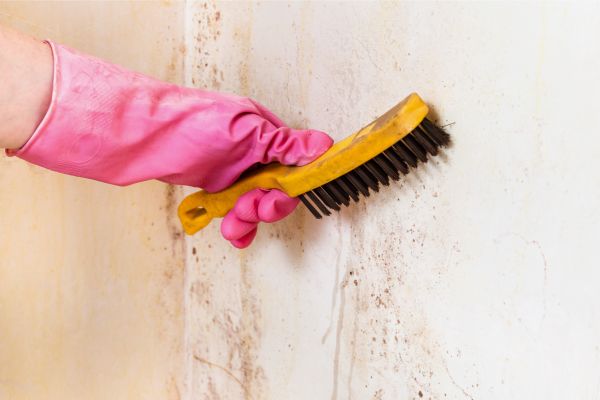
A. Inspect the Surface
Before cleaning stucco, carefully inspect for tough stains that may require a more rigorous approach. Promptly addressing stains and small discolorations prevents them from becoming more challenging to remove later. Look for signs of mold or mildew, which can lead to structural issues and ruin the appearance of the stucco permanently if left untreated. Use a soft brush to test suspect areas for brittleness or underlying issues. When using bleach, ensure it is appropriately diluted to avoid damaging the stucco surface and achieve effective mold and mildew removal.
B. Seal Any Cracks
Before cleaning, seal visible cracks in stucco to prevent water infiltration, as this can weaken the stucco further and cause more damage in the long run. Use a stucco-appropriate sealant that matches the color and texture of your wall. Addressing cracks early maintains stucco integrity and appearance. After sealing, gently spray the area with a hose to test the repair’s durability against water exposure. For larger cracks, clean thoroughly with soap and water before applying the sealant to ensure proper adhesion and adequate protection. Doing this early is one of the best ways to keep crack from growing.
C. Rinse the Surface
Begin rinsing the stucco with a gentle stream of water to remove the remaining dirt after the initial cleaning stages. Regulate water pressure to avoid damage and ensure thorough cleaning without affecting surrounding elements. Allow water to carry away loose debris lifted by the cleaning solution, ensuring no paint or concrete surfaces are affected. Watch how the water runs off the stucco and ensure no pools or collects on the stucco, as this can soften and weaken the structure when it stays wet for long periods. Keeping your stucco clean is a great way to protect its integrity and appearance.
D. Apply a Cleaning Solution
Choose an eco-friendly cleaning agent suitable for porous stucco surfaces so there is less concern about runoff and water or soil contamination around the home. Dilute as directed and apply with a soft-bristled brush, working it into the texture to lift stains effectively. Avoid over-saturation to prevent water damage. Rinse off the solution promptly with gentle water flow to maintain sealant integrity and avoid sand erosion. Use extra care around caulk lines and ensure thorough cleaning. Using safer products protects the environment and cleans your home’s exterior without leaving chemical residues.
E. Scrub Difficult Stains
For tough stains, use a mixture of detergent and borax applied directly to affected areas. Allow the solution to penetrate stains without damaging stucco texture. Avoid using a wire brush to prevent surface damage; use a softer brush to scrub gently but effectively. Address algae with care using the detergent-borax mixture to restore a clean stucco appearance without harsh chemicals. If the stains are especially difficult or cover larger areas of the stucco surface, you may need to call the professionals to take care of the cleaning. They are better prepared to handle difficult stains like this.
F. Rinse Again
After cleaning and scrubbing, thoroughly rinse the stucco to remove any remaining cleaning solution. Use a gentle hose spray to remove all traces and prevent chemical buildup. A final rinse with plain clean water will remove any residual cleaner, loose dirt, or other debris to leave your stucco looking nice and clean. Inspect the area to ensure all stains are removed, leaving the stucco looking refreshed and enhancing your home’s exterior. This thorough cleanup preserves stucco integrity, enhances its visual appeal, and keeps your home looking great.
II. Choosing the Right Cleaning Solution
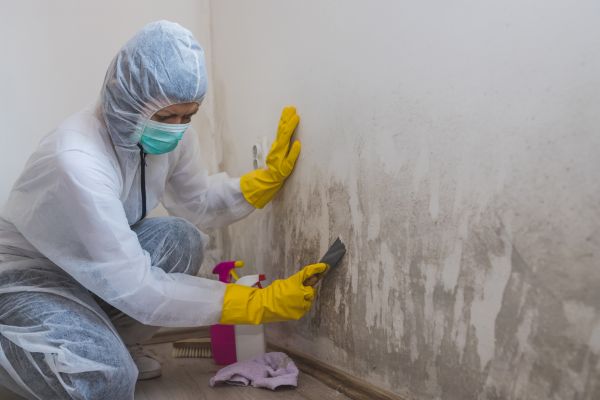
Deciding on the best solution for cleaning stucco surfaces is an important step in maintaining them. Whether you’re dealing with light soiling or battling persistent stains, an effective cleaning can revive the appearance of stucco masonry.
A. Bleach and Water Solution
A bleach and water mixture effectively removes tough stains from stucco without relying on aggressive claims. Adequately diluted, it penetrates stucco to break down mold and mildew, leaving a clean surface. Careful application is critical to prevent damage to the stucco texture. Alternatively, vinegar offers a natural solution to remove mildew without harsh chemicals, preserving the environment. Pre-rinsing with a garden hose clears debris, ensuring effective cleaning while maintaining stucco durability and appearance.
B. Borax and Warm Water
Borax mixed with warm water gently cleans stucco, especially for efflorescence removal caused by salt deposits. It dissolves salts without harming stucco integrity and provides temporary waterproofing benefits. Unlike harsh chemicals, borax emits no toxic fumes, making it safer for home use and environmentally friendly. Applied correctly, borax protects stucco from excessive moisture absorption, maintaining its condition near outdoor areas.
C. Commercial Stucco Cleaner
Commercial stucco cleaners offer a convenient solution tailored for tough stains on stucco surfaces. Formulated to lift dirt and grime effectively without damaging the delicate stucco finish, these products are applied evenly with a sprayer for thorough cleaning. Unlike harsh cleaners suitable for robust materials, commercial stucco cleaners maintain structural integrity and aesthetic appeal. Their gentle yet effective approach ensures stucco remains clean and pristine, enhancing home exteriors without compromising durability.
III. Tips for Maintaining a Clean Stucco Surface
Maintaining a stucco surface requires regular attention to prevent buildup and ensure longevity. The process includes routine cleaning steps that protect the material from the wear and tear of the elements.
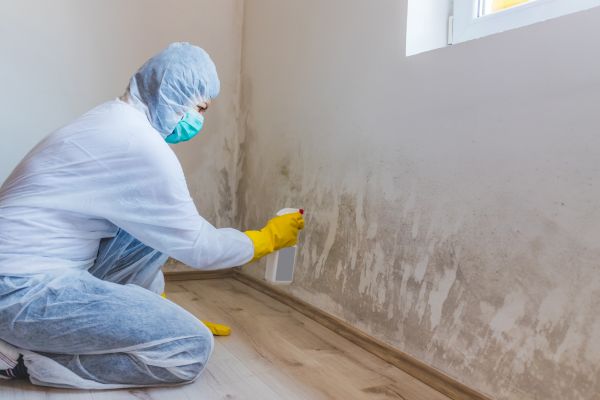
A. Rinse off Debris Regularly
Regularly rinsing debris from stucco walls is essential for maintenance. This prevents dirt and minerals from embedding in the texture, which can lead to stubborn stains over time. With regular rinse cleaning, harsh cleaning solutions are often unnecessary.
B. Address Stains Promptly
Promptly address spills on stucco exteriors to prevent stains. Quickly clean spills with a gentle detergent and water to prevent them from setting. Regularly dust stucco surfaces to prevent dust buildup that can obscure natural colors and complicate stain removal.
C. Consider Hiring a Professional Occasionally
Routine maintenance can be managed with basic tools, but stucco professionals comprehensively handle challenging issues like persistent algae growth. Periodic professional cleaning keeps the stucco pristine and enhances the home’s exterior appeal.
IV. Dealing with Common Stucco Issues
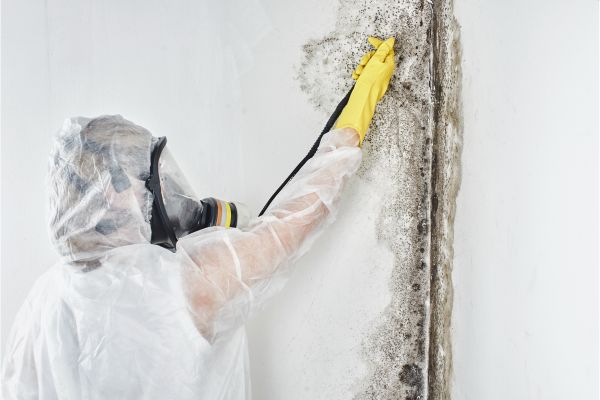
Stucco surfaces add a classic charm to any home, but they come with their own maintenance needs. Cracks and damage, mold, mildew, and algae stains are the most prevalent issues homeowners may face. Addressing these challenges head-on helps preserve the integrity of the surface and maintain the exterior’s aesthetic appeal.
A. Cracks and Damage
Stucco exteriors often develop cracks due to settling or impact. Addressing these issues promptly with cleaning and matching sealant application is crucial for maintaining protection and appearance. Ignoring stucco cracks can lead to moisture penetration and structural damage. Therefore, regular inspections and immediate repairs save time and money by preventing extensive repairs later. Professional repairs preserve the stucco’s integrity, enhancing property value and curb appeal.
B. Mold, Mildew, and Algae Stains
Mold, mildew, and algae commonly affect stucco, especially in damp or shaded areas, causing unsightly stains and potential damage. Regular cleaning and targeted treatments are essential to prevent deep penetration into the porous material. Using appropriate cleaning solutions removes organic contaminants without harming the stucco. Preventive measures such as ensuring adequate drainage and promptly fixing leaks minimize cleaning frequency and maintain stucco aesthetics and longevity.
Conclusion
Proper stucco cleaning and maintenance help keep the surfaces appealing and structurally sound. Regular inspections and prompt treatment of stains and cracks prevent long-term damage and the need for extensive repairs. Using the right solutions, such as diluted bleach or borax, and gentle cleaning methods protect the stucco’s texture while removing dirt and grime. Above all, professional care or advice on cleaning stucco can ensure it remains a durable and attractive part of a home’s exterior. Make the call and see what services are available to help you take care of the stucco finish on your Tampa home today!
